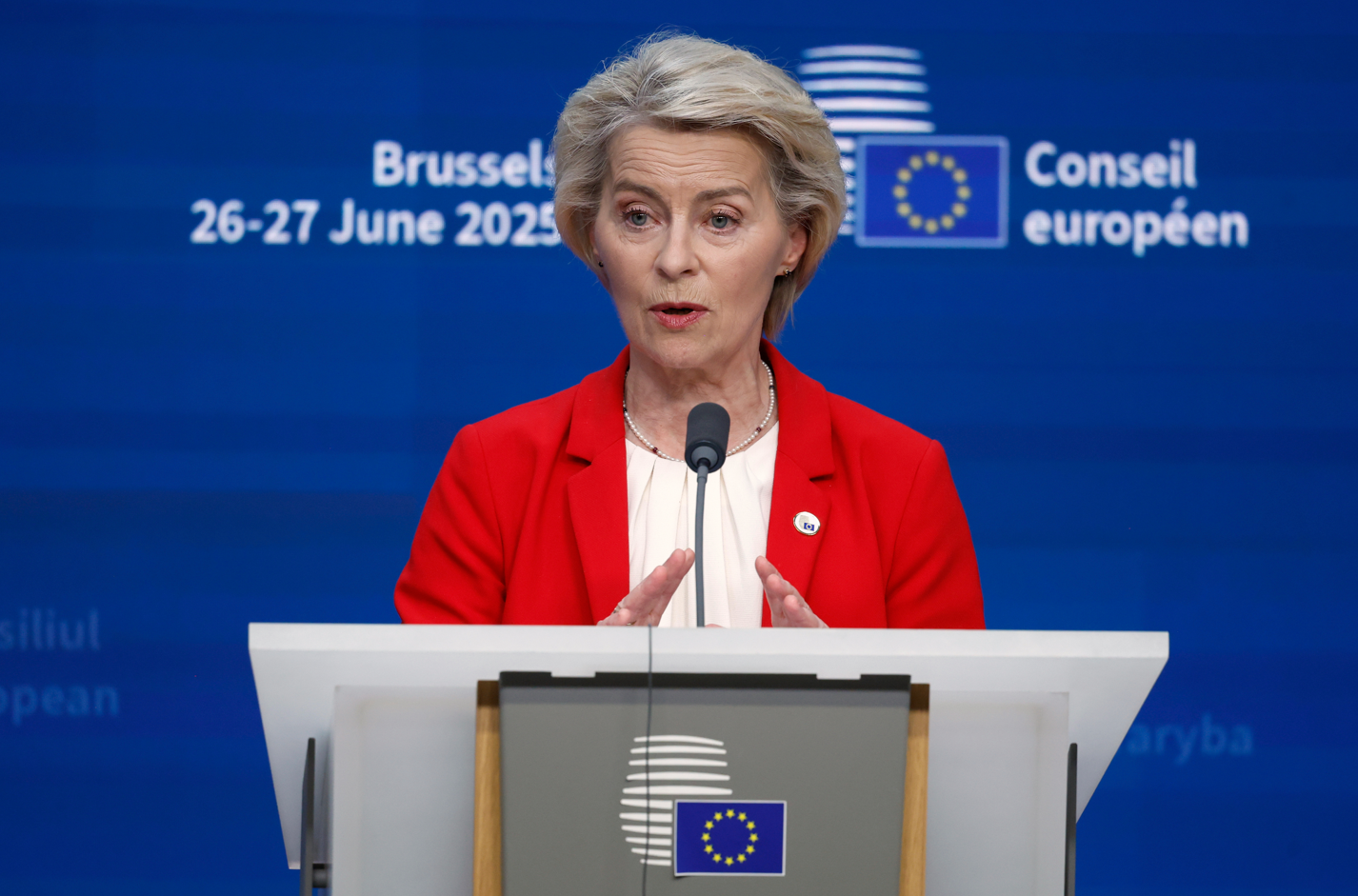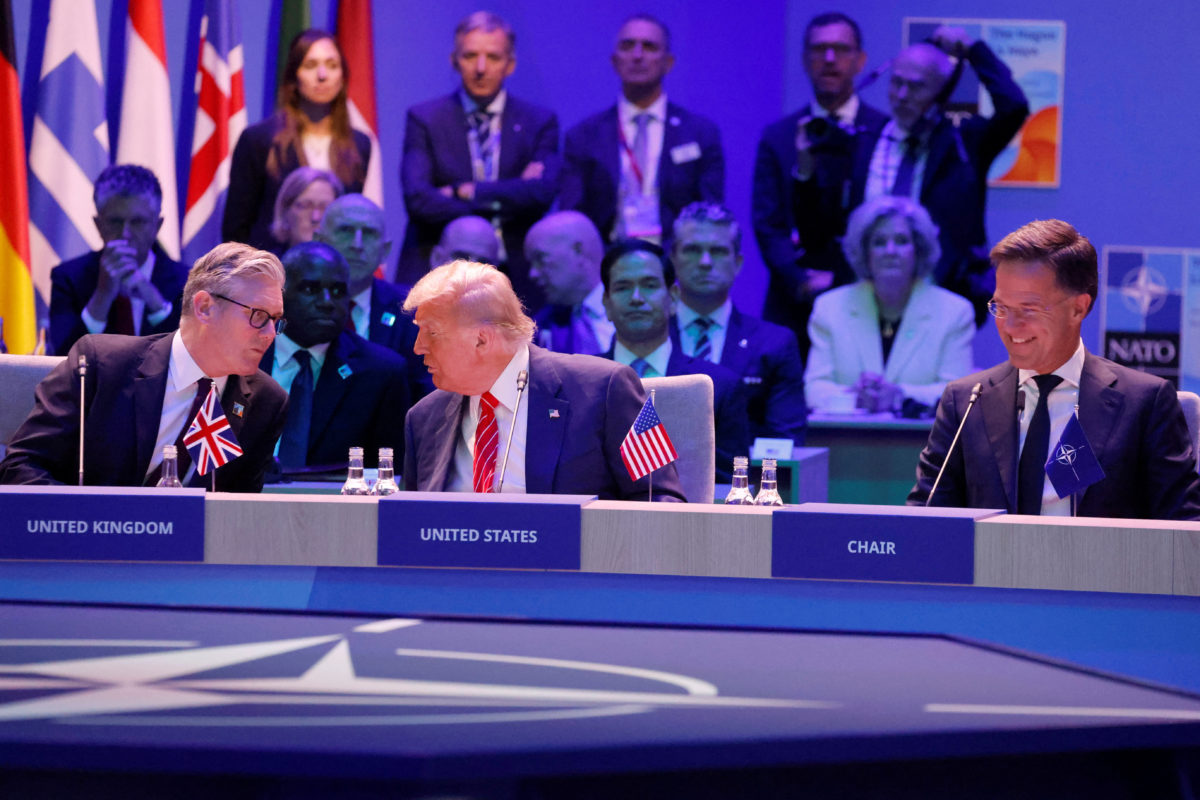Amid the uncertainty of U.S. domestic affairs and the evolving international order, the transatlantic relationship — despite its apparent stability — is likely to experience undercurrents of discontent in the years ahead.

European Commission President Ursula von der Leyen addresses a media conference at an EU summit in Brussels, June 26, 2025. (Photo: AP)
In June, European countries turned their attention to three high-profile events: the G7 summit in Canada, the NATO summit in the Netherlands and the EU summit in Brussels, Belgium. The first two marked the peak of U.S.-EU interaction following Donald Trump’s return to the White House earlier this year, while the third meeting provided an opportunity for Europe to assess the state of the transatlantic relationship.
Europeans arrived at the G7 summit with two major demands: first to secure U.S. support for Ukraine and push for further sanctions on Russia and second to resolve ongoing bilateral trade frictions. Two days before the summit, however, Israel’s surprise attack on Iran disrupted Europe’s calculus and its leaders raised these demands at the NATO summit a few days later. They adopted three key strategies to advance their demands and adjusted their communication style to suit Trump’s preferences.
First of all they pledged to assume greater defense responsibility. At the NATO summit, they announced plans to increase their military spending to 5 percent of GDP (although 1.5 percent of that would be used for critical infrastructure). In return, they sought Trump’s recognition of NATO’s collective defense commitment.
Then they created a common enemy. During the G7 summit, European Commission President Ursula von der Leyen said: “When we focus our attention on tariffs between partners, it diverts our energy from the real challenge. … The biggest collective problem we have has its origins in the accession of China to the WTO in 2001.”
Finally, they took a tough stance — for example, French President Emmanuel Macron visited Greenland the day before the G7 summit, a move that irritated Trump.
Of the three strategies, only the first yielded tangible results. Apparently, Trump has no intention of involving Europe in Middle East or Indo-Pacific affairs, nor does he accept Europe's framing of non-Western powers. For instance, the Chair’s Summary from the 2025 G7 summit stated: “Leaders acknowledged the links between crisis theaters in Ukraine, the Middle East and Indo-Pacific” — a statement that was not endorsed by Trump because of his early departure from the event. To the surprise of U.S. allies, he even suggested that Russia and China should be included in what is now called the Group of Seven.
EU assessment and response
The European Union convened a summit the day after the NATO summit to assess the outcomes of both the G7 and NATO events.
Although European countries at the NATO summit had promised to significantly boost defense spending, Europe’s defense vulnerabilities lie less in defense investment and more in its fragmented military-industrial market and command structures — problems rooted in the EU’s lack of sovereign statehood. Therefore, the EU summit vigorously promoted the integration and mobilization of European defense capabilities.
EU leaders also invited Ukraine’s President Volodymyr Zelenskyy to attend the meeting once again, signaling their support not only through discussions on security guarantees but also by stating that “the EU will continue to provide Ukraine with regular and predictable financial support in the long term.” Such moves reflect the EU’s determination to assume regional security responsibilities, even in the face of limited support from the United States.
Notably, the EU summit failed to launch its planned 18th round of sanctions against Russia, because Trump had continued to oppose sanctioning Russia during the NATO summit.
EU leaders devoted significant time at the summit to discussing trade frictions with the United States. There are clear signs that Europe does not intend to sit around doing nothing in the face of thorny trade issues. For example, a summit resolution explicitly emphasized the need to consolidate the EU’s global influence as “a predictable, reliable and trusted partner.” Von der Leyen proposed that the EU should explore closer ties with the Comprehensive and Progressive Trans-Pacific Partnership (CPTPP) as the first step in rebuilding the global trade order.
Finally, the EU summit adopted a pragmatic approach to relations with China, with the Trump administration’s stance still unclear. While EU leaders discussed Russia’s “hybrid action” and the support Russia receives from Iran, Belarus and North Korea, China was notably absent from the conversation. This marked a departure from the tougher tone toward China that was taken at the EU’s Foreign Affairs Council meeting three days earlier.

British Prime Minister Keir Starmer, U.S. President Donald Trump and NATO Secretary General Mark Rutte (Photo: NATO)
Transatlantic prospects
These days, European leaders have been carefully maintaining their relationships with Trump, aiming to manage Washington because of their dependence on the U.S. for security. The signing of the U.S.-Ukraine mineral resources agreement at the end of April gave Europe a significant boost, and the recent G7 and NATO summits helped preserve the respectability of transatlantic ties. Although transatlantic economic and trade negotiations have not yet concluded, overall relations are expected to achieve relative stability for the rest of Trump’s term.
Trump’s two terms in office have shattered any illusions European elites might have held about U.S. domestic affairs. They cater to Trump’s preferences mainly to gain more diplomatic leverage and buy time for their domestic transformation. Over the past six months, Europe’s power dynamics, industrial landscape and relations with the wider world have already begun to undergo profound changes.
The Trump administration has welcomed Europe’s efforts to improve its competitiveness as a single market and take on more defense responsibilities. At the same time, however, it has pushed Europe to the margins in world affairs, particularly in matters concerning the Middle East, the Indo-Pacific and great power relations.
Shortly after the three summits, France’s Macron had his first phone call in three years with Russian President Vladimir Putin to discuss the Ukraine conflict and the Iranian nuclear issue. This move was a calculated counterattack against Trump, communicating Europe’s strong desire to have a seat at the table.
All these developments indicate that amid the uncertainty in U.S. domestic affairs and the evolving international order the transatlantic relationship — despite its outward stability — is likely to experience turbulent undercurrents in the coming years.
